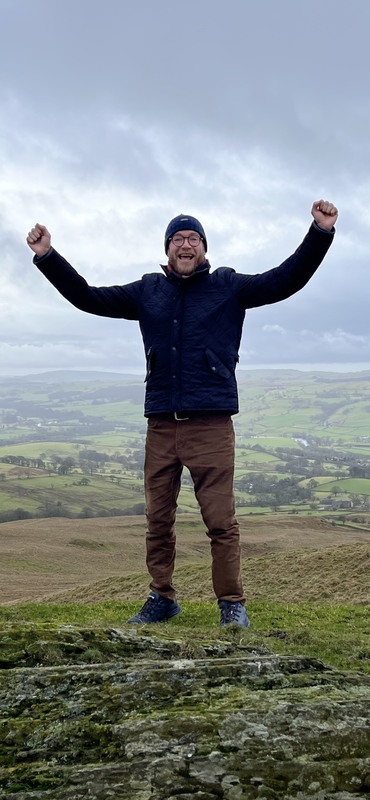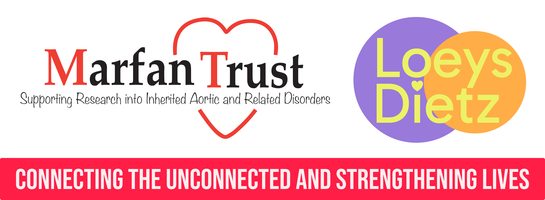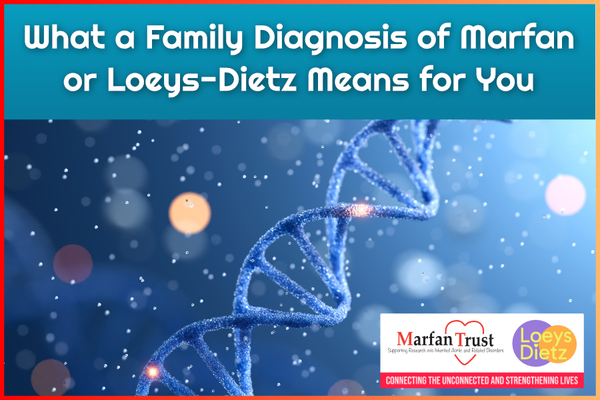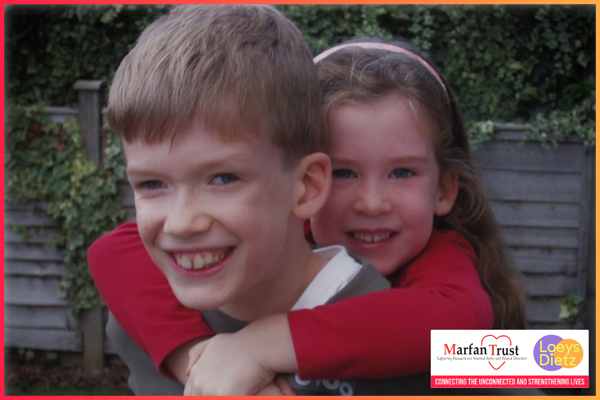Mention of Marfan syndrome conjures up a set of signs and symptoms, a physical image of a tall slender build, long spidery fingers, and a narrow face. But life is complicated and so are syndromes. Whilst a study of tallness in Marfan patients found their mean height was above the 95th percentile of the general population by the time they turned three, not every Marfan is tall, or thin. Not every Marfan displays the classic signs. How many of you depart from the classic image like Loui?

by Loui Hanlon
I suffered an aortic dissection at the age of 35 in 2018. I then underwent an emergency aortic arch replacement in 2018 at St Bart's, after which I suffered an ocular transient ischaemic attack (TIA). This was an unexpected medical event and the source of the dissection was found to be Marfan syndrome, a condition that was previously unknown to me.
They discovered a tear all the way down to my iliac arteries, and both carotids have dissections and small, currently stable, aneurysms.
Three years later, in November 2021 as I was about to turn 39, I felt a pain in my chest and stomach and I had to have a Dacron gelaweave replacement from the subclavian to just after the abdomen as I had a large aneurysm at top and bottom over 5.5. When I awoke I suffered a subdural haematoma (SDH) and the stroke left me with right-side paralysis. I spent Christmas in ICU. Thankfully I now walking and talking!
I also had several ops on the wound this year and a vac pump fitted for about 6 months for lots of debridement and cartilage removal and have a dissection running into the iliac arteries and an over-enlarged aorta at the bottom by the dissection.
In the meantime I caught Covid once I had my first shower alone, and I spent a month recovering from that.

I turned 40 this Christmas and after my most recent previous surgery at 35, I think my brain still gets a little confused when I’m tired but I have just been away for the weekend with friends walking in the Lake District. Only some smaller walks yet but I’m working on it!
I have scoured the groups online trying to find stories of amazing results from people who've had strokes and not found many, but I believed I would recover and I will until I’m challenged again. I said I would have a stroke after this last surgery, and I did, so it wasn’t a shock.
After discovering I had the Marfan gene mutation after the first stroke, multiple family members were tested and about 80% of those tested positive for the same gene.
The strange thing is that I have no phenotype (physical characteristic) of Marfan syndrome aside from the fibrillin mutation which is genetic hereditary!
Once a mutation is discovered in a family, all first-degree relatives (parents, siblings, children) must be checked to see if they carry the mutation. This can be done through a genetic referral and screening funded by the NHS. This is especially important in a family where there are no physical clues.
Loui attended the doctors in training sessions at Chelsea & Westminster, raising awareness of Marfan syndrome. As we corresponded by email preparing this article he was walking along the beach in St Ives - life is beautiful! Thank you so much, Loui!!!!









